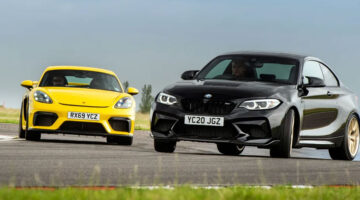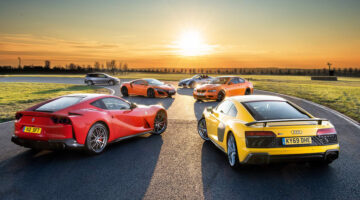Porsche 356 A 1600 Speedster. The car that launched the 911 and Porsche as we know it today. Plus an entire continental dealership.
| Engine | Power | Torque | 0-100kph | Top speed | Weight | Value Today |
|---|---|---|---|---|---|---|
| Inline 4cyl 'Type 616/1', 1582cc | 59bhp @ 4500rpm | 110Nm (81 ft lb) @ 2800rpm | 16.5sec | 160kph | 760kg (78bhp/ton) | $395,000 (ish) |
It’s not hugely blasphemous to say that without the 356, there wouldn’t have been a Porsche 911. After all, the ‘light weight, high power’ concept first realised by Ferdinand ‘Ferry’ Porsche on the 356 would later be perfected on the 911, a realisation that begat a sports car benchmark and production spanning 53 years thus far. It’s the 356’s significance on Porsche’s American dealership though that makes for more interesting reading.
By 1950, thanks to sublime handling, solid build quality and enviable aerodynamics, Porsche’s first production model had already garnered popularity across Europe, a class victory at the 24 Hours of Le Mans in 1951 doing little harm for the badge either. Recognition overseas was the next step.
Enter Maximilian E. Hoffman, US entrepreneur and car importer keen to introduce Ferdinand Porsche’s fast yet user-friendly sports car to a hotly contested American market. Though an initial deal for 15 annual imports proved surprisingly lucrative, thanks in-part to American Briggs Cunningham’s endeavours with the 356 on-track, still Hoffman had loftier aspirations. What if the 356 was lighter and more economical? What if it were given a name more fitting its American audience? The revised 356 ‘Speedster’ soft-top duly arrived in 1954, but it would be the revised ‘Type A’ that debuted in late 1955 that really set the ball rolling.
Like most ‘Pre-A’ models of the early 1950s, it featured steel bodies and interiors fashioned by Reutter. Unlike its ‘Pre-A’ predecessors however, Type As from ’55 onwards featured heavily revised suspension, wider tyres on 15in rims, and a higher compression 1582cc ‘Type 616/1’ boxer four-cylinder. Now producing 59bhp and 74lb ft of torque (ah the fifties!), the 356 Speedster was capable of a fedora-quivering 160kph and 0-100kph in a very respectable 16.5 seconds. Most notable however was the weight-saving ‘stripped out’ interior that helped quarter the price to $2995.
It worked. Building on both the success of open-top Porsches on-track (the 550 Spyder took Porsche’s 11th victory on the infamous Targa Florio road rally in 1956) and in Hollywood courtesy of James Deane, Porsche sales Stateside began to rocket. In 1952, 283 Porsches were imported to American, some 21 per cent of its total sales. By 1955, this had leapt to 50 per cent with 3624, and by 1965 – the last year of 356 production – US sales accounted for 74.6 per cent of Porsche’s global total.
Not that success for the 356 was limited to the USA. Between 1948 and 1965, more than 10,000 examples were produced, of which 2910 were Speedsters. Though the starting price would eventually rise to $6900 as popularity grew, well-maintained original 356s today can fetch up to $400K. Whether Ferdinand Porsche and Max Hoffman knew the true significance of that handshake back in 1950 remains to be seen.
* Huge thanks to Porsche Middle East and Africa and the Porsche Museum in Stuttgart, at which the above 1956 Porsche 356 A 1600 Speedster – ‘Lady’ – is currently on display.



